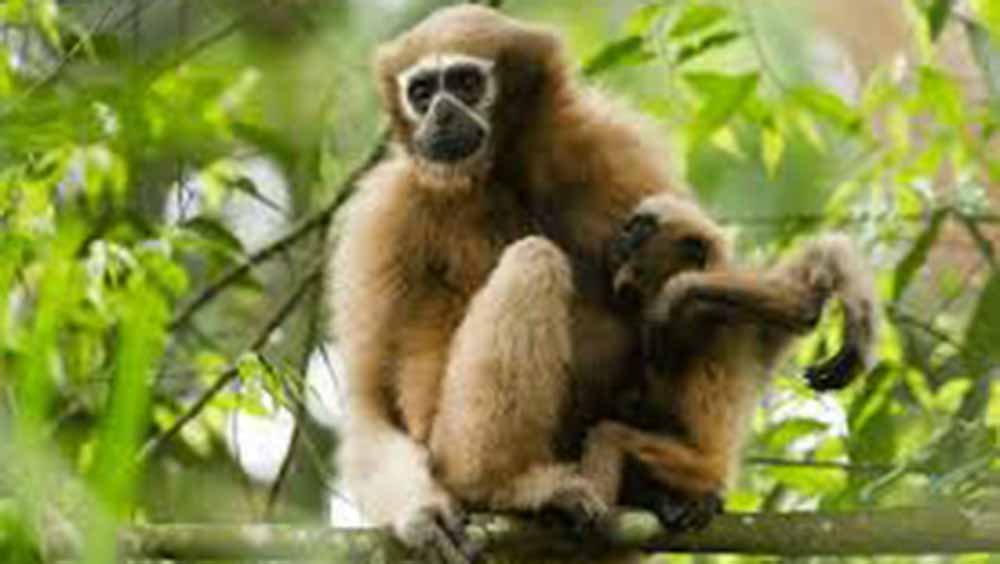The Tripura government unveiled a detailed action plan aimed at protecting the endangered Western Hoolock Gibbon — the only ape species found in India, in a major push for wildlife conservation.
This initiative marks a significant milestone in the state’s efforts to safeguard its fragile biodiversity and tackle the alarming decline in the gibbon population.
Listed as “endangered” on the IUCN Red List and protected under Schedule I of the Wildlife (Protection) Act, 1972, the Western Hoolock Gibbon enjoys the highest degree of legal protection. Yet, its numbers have continued to decline over the years, largely due to habitat loss, hunting, and human-wildlife conflicts.
Tripura, an ecologically rich state in the northeast, harbours one of the country’s last remaining gibbon populations. These agile, tree-dwelling primates are known for their spectacular aerial swings across forest canopies and hauntingly melodic calls that echo through the jungle. But once-flourishing forests have shrunk and fragmented, leaving fewer safe spaces for them to thrive.
A survey in 2005 recorded 97 individual gibbons across three forest patches in Tripura. That number has since dipped to 79, divided among 32 groups, officials said.
Nationally, the gibbon population stood at about 12,000 two decades ago, but conservationists fear it may now be significantly lower.
To reverse this worrying trend, the Tripura Forest Department, in collaboration with Tripura University and conservation NGO Aaranyak, convened a multi-stakeholder workshop this year to craft a robust conservation roadmap.
Tripura University’s professor Sabyasachi Dasgupta, who is actively involved in the project, said establishing protocols for long-term population monitoring and restoring degraded forest habitats are part of the action plan.
Training forest staff and law enforcement in wildlife protection, conducting ecological and behavioural research and promoting community awareness and participation in conservation are also the goals of it, he said.
The gibbons of the state mainly live in protected areas such as Trishna Wildlife Sanctuary in South Tripura, and forests in Gomati and Khowai districts. However, conservationists caution that without proactive steps to prevent further forest degradation, gibbons may vanish from the wild.
“We are emphasising the need to maintain cultural integrity while protecting the gibbons,” Dasgupta said.
“Traditional methods like shifting cultivation are deeply rooted, but they often disrupt forest continuity. We need strategies that reduce ecological harm while respecting cultural traditions. Canopy connectivity is crucial for gibbon movement and survival,” he added.
Divisional Forest Officer of Gomati H Vignesh said gibbons have been spotted in the Amarpur subdivision, though accurate population data is still being collected.
Bimal Das, the assistant conservator at Trishna Wildlife Sanctuary, confirmed that eight gibbons are currently thriving within its core zone.
Grassroots conservation campaigns are also underway, with NGOs and academics engaging communities living near forest fringes. These programmes aim to reduce human-animal conflict, especially incidents involving crop damage and encroachment, while highlighting the ecological role of gibbons, officials said.
As awareness grows and conservation efforts gain momentum, environmentalists believe Tripura has the potential to become a model for gibbon preservation across the region, and a beacon of hope for India’s only ape.
Tripura steps up efforts tosave India’s last ape species
Agartala, Jul 25 (PTI)

